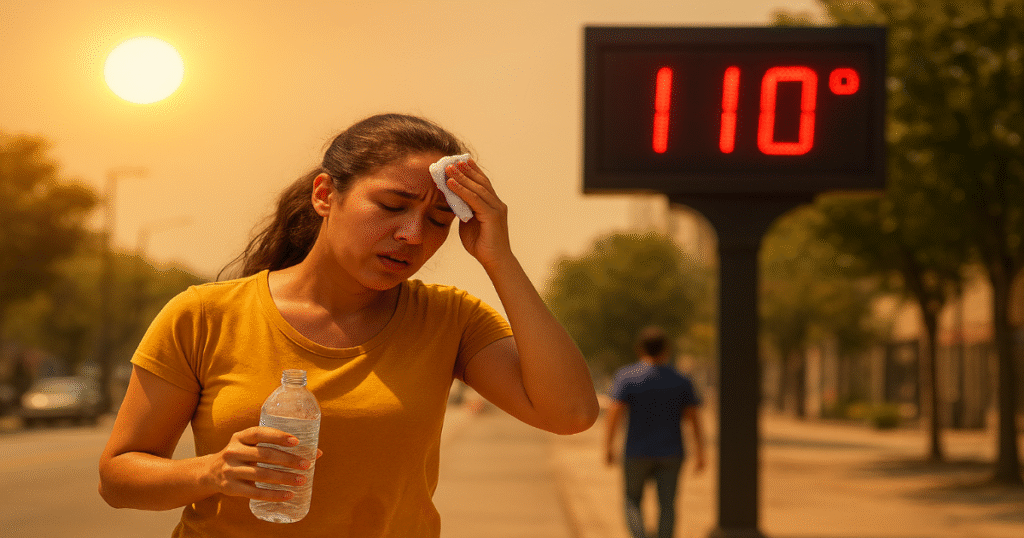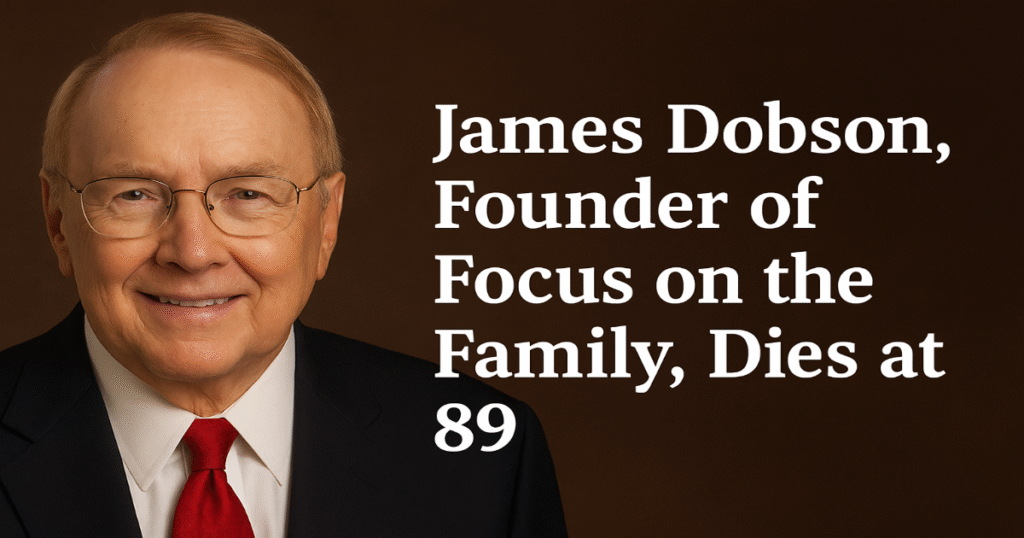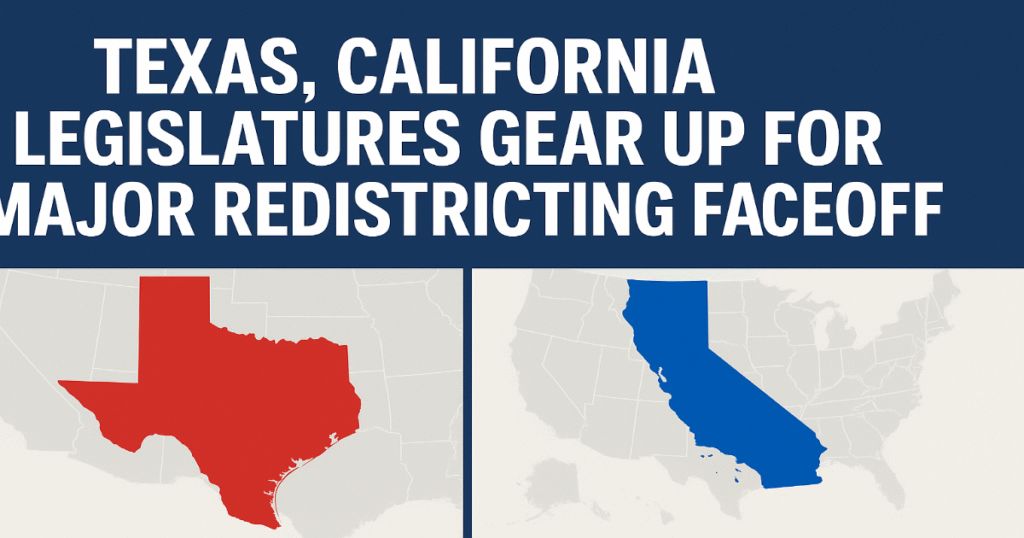
A Summer of Extremes
The Western United States is baking under yet another wave of blistering heat, the kind of event that meteorologists now describe as increasingly frequent, longer-lasting, and more dangerous. Over the past week, a massive heat dome has locked itself over the region, pushing thermometers well into triple digits, shattering long-standing records, and leaving millions of residents scrambling for relief.
From the vineyards of Northern California to the deserts of Arizona, the impacts are immediate and severe: parched landscapes are igniting into wildfires, energy grids are straining under surging demand, and public health officials are issuing urgent warnings about heat illness.
“This is the kind of heat wave that keeps emergency managers up at night,” said David Lawrence, a meteorologist with the National Weather Service. “It’s not just the daytime highs—it’s the fact that the nights aren’t cooling down. That’s what makes this event so dangerous.”
Record Heat Across the Region
In Portland, Oregon, residents woke up on Friday to the news that the city had reached 102°F, smashing a daily record that had stood since the early 1940s. Seattle also sweltered, with highs in the upper 90s, temperatures rarely seen in a city more accustomed to rain than relentless sun.
Farther south, California is experiencing a punishing mix of heat and dry winds. In Fresno, Bakersfield, and Redding, afternoon highs have hovered between 104°F and 107°F all week. Even coastal areas, usually spared by the Pacific Ocean’s cooling influence, are feeling the burn. San Francisco saw temperatures climb into the 90s in parts of the city—a stark contrast to its famously foggy, chilly summers.
In Arizona, where August heat is nothing new, the scale of the current wave is still remarkable. Phoenix hit 111°F on Saturday, while Tucson wasn’t far behind at 108°F. Residents there are familiar with heat advisories, but the National Weather Service elevated warnings, calling this week’s conditions “dangerously hot, even for the desert Southwest.”
The Problem of Hot Nights
Perhaps the most unsettling part of this heatwave is what happens after the sun goes down. Typically, desert and inland regions rely on cooler nights to offer relief, but this week many places have struggled to drop below 75°F overnight.
“When you don’t get that cool-down at night, your body never fully recovers from the daytime stress,” explained Dr. Maria Gonzales, an emergency physician at Los Angeles County+USC Medical Center. “That puts older adults, young children, outdoor workers, and people without access to air conditioning at significant risk.”
Los Angeles recorded nighttime lows in the upper 70s, while Las Vegas dipped only to 85°F at its coolest point Friday night. This lack of relief has driven residents into cooling centers, with city officials in California and Arizona extending their hours and expanding capacity.
Wildfire Season Explodes
The blistering temperatures come at the worst possible time for Western states already battling dangerous wildfires.
In California, the Pickett Fire has grown rapidly in Napa County, scorching more than 6,500 acres and forcing evacuations in wine country. Firefighters are struggling with steep terrain and erratic winds that make containment efforts unpredictable.
Meanwhile, the Gifford Fire in central California has become the state’s largest blaze of the year, tearing through over 130 square miles of grassland and chaparral. More than 2,000 firefighters are on the ground, battling not just flames but also exhaustion from relentless heat.
Across the region, dozens of other wildfires are burning:
- The Dragon Bravo Fire in Arizona, ignited by lightning in July, has now consumed over 145,000 acres, destroying more than 100 structures and even reaching the Grand Canyon Lodge.
- Colorado’s Lee Fire, still burning since early August, has blackened 137,000 acres, putting it among the largest in state history.
“Every year we say the same thing, but it’s true—the season keeps starting earlier, ending later, and getting worse in between,” said Cal Fire spokesperson Heather Williams. “This year’s combination of extreme heat and bone-dry vegetation is a nightmare scenario.”
Strain on Health and Infrastructure
Hospitals across the West are reporting a sharp uptick in heat-related illnesses. In Portland, a runner participating in the Hood to Coast relay collapsed and required hospitalization. In Phoenix, emergency responders treated dozens of people suffering from heat exhaustion during outdoor festivals.
In California’s Central Valley, agricultural workers—many of whom labor outdoors with limited shade—are especially vulnerable. Labor advocates have renewed calls for stronger protections, including mandatory rest breaks, shaded rest areas, and access to water.
Meanwhile, power grids are under severe stress. Utilities in California, Nevada, and Arizona have urged residents to reduce usage during peak afternoon hours to avoid rolling blackouts. Air conditioners are running nonstop, and demand for electricity is nearing record highs.
“People need cooling for survival during a heat wave like this,” said Elliot Mainzer, CEO of the California Independent System Operator, which manages much of the state’s power grid. “But that very demand is what threatens the grid. It’s a delicate balancing act.”
Climate Change in the Spotlight
While heat waves are not new to the American West, scientists emphasize that events like this one are becoming more extreme due to climate change. Warmer global temperatures not only make heat waves more likely but also intensify their severity and duration.
A 2024 study published in Nature Climate Change found that the frequency of “mega-heatwaves” in the Western U.S. has more than tripled since the 1980s. At the same time, hotter, drier conditions are fueling larger and more destructive wildfires.
“This isn’t just bad luck—it’s climate change at work,” said Dr. Sarah Kaplan, a climate scientist at UC Berkeley. “We’re stacking the deck for hotter summers, bigger fires, and more strain on our health and infrastructure.”
Communities Adapt and Endure
Despite the challenges, communities across the West are finding ways to adapt. Cities like Los Angeles, Sacramento, and Phoenix have expanded cooling centers in libraries, schools, and community centers. Nonprofits are distributing bottled water and portable fans to unhoused populations, who are disproportionately at risk during extreme heat.
In Napa County, volunteers are working around the clock to support evacuees displaced by wildfires. Shelters have been set up in schools and churches, with local wineries even donating supplies to help their neighbors.
On the individual level, families are adjusting routines—running errands early in the morning, keeping curtains drawn during the hottest hours, and spending evenings in public parks and malls to escape the sweltering conditions at home.
Looking Ahead
Meteorologists say the worst of the heat may begin to ease early next week, but relief will be uneven. Coastal regions may cool slightly thanks to ocean breezes, while inland and desert areas will likely continue to endure triple-digit highs well into September.
Even after temperatures fall, the danger of wildfires will linger. Dry vegetation, lightning strikes, and unpredictable wind events will remain a constant threat until autumn rains return—if they arrive on time.
“We’re in the thick of it right now, but this isn’t just a one-off event,” said Lawrence of the NWS. “This is a preview of summers to come.”
Conclusion
This latest heat wave across the American West is a stark reminder of the interconnected crises facing the region: rising temperatures, drought, wildfire risk, and the human toll of climate change. Communities are adapting, but the scale of the challenge is daunting.
For now, the message from officials remains clear—stay hydrated, seek shade, check on neighbors, and prepare for more of the same. Because in the West’s new climate reality, heat waves are no longer rare emergencies—they’re becoming the new normal.
Also Read: Ghislaine Maxwell, in DOJ Interview, Dismisses Claims of Prince Andrew Encounter
Visit: Cheapest Sale

Hey I am Srimanta Pradhan brings 10 years of experience to News Broadcast and Marketing, specializing in effective communication.A specialized content writer with a decade of expertise crafting compelling narratives for News Broadcast and Marketing. Transforms complex information into engaging, impactful content.




















